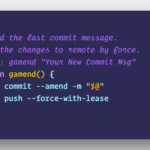
Introduction
When it comes to computer networking, there are few errors that are as frustrating as encountering a “Temporary Failure in Name Resolution” issue. This error can occur in various ways, whether you’re attempting to access a website, connect to a remote server, or perform any task that requires resolving a domain name into an IP address. When this error occurs, it can bring your work to a standstill and leave you feeling a bit stranded.
However, fear not! This comprehensive guide will delve into the root causes of the “Temporary Failure in Name Resolution” error and provide you with a comprehensive set of troubleshooting steps and solutions to resolve this issue efficiently.
What is “Temporary Failure in Name Resolution”?
Before we dive into the troubleshooting process, it’s important to understand what the “Temporary Failure in Name Resolution” error actually means. This error typically occurs when a client device, such as your computer or smartphone, is unable to resolve a domain name (e.g., www.example.com) into its corresponding IP address (e.g., 192.168.0.1).
The Domain Name System (DNS) is responsible for translating human-readable domain names into machine-readable IP addresses, enabling seamless communication between devices on the internet. When this process fails, you encounter the dreaded “Temporary Failure in Name Resolution” error.
What are the Common Causes of “Temporary Failure in Name Resolution”
The “Temporary Failure in Name Resolution” error can stem from various underlying causes, including:
- Network Connectivity Issues: If your device is not connected to the internet or if there are network connectivity problems, DNS resolution will fail, leading to this error.
- Outdated DNS Cache: DNS caches can sometimes become outdated or corrupted, causing resolution failures.
- Incorrect DNS Settings: If your device is configured with incorrect or outdated DNS server settings, it may be unable to resolve domain names correctly.
- Antivirus or Firewall Interference: Overly aggressive antivirus or firewall software can sometimes block DNS requests, resulting in name resolution failures.
- Router or Modem Configuration Issues: Improper configuration or malfunctioning routers or modems can disrupt DNS resolution.
- ISP DNS Server Issues: If your Internet Service Provider’s (ISP) DNS servers are experiencing issues or downtime, you may encounter this error.
How to Troubleshoot the Issue
To resolve the “Temporary Failure in Name Resolution” error, follow these troubleshooting steps in the order presented:
Step 1: Check Network Connectivity
Before proceeding with any other steps, ensure that your device is properly connected to the internet. Check your Wi-Fi or Ethernet connection, and verify that other devices on the same network can access the internet without issues.
Step 2: Flush DNS Cache
Sometimes, the DNS cache on your device can become outdated or corrupted, causing name resolution failures. Flushing the DNS cache can help resolve this issue:
- Windows: Open the Command Prompt as an administrator and run the following command: ipconfig /flushdns
- macOS/Linux: Open the Terminal and run the following command: sudo killall -HUP mDNSResponder
After flushing the DNS cache, try accessing the website or service again.
Step 3: Update DNS Settings
Incorrect or outdated DNS server settings can prevent your device from resolving domain names correctly. Update your DNS settings by following these steps:
- Windows: Open the Control Panel, navigate to “Network and Internet” > “Network and Sharing Center” > “Change adapter settings”. Right-click on your active network adapter and select “Properties”. Scroll down and select “Internet Protocol Version 4 (TCP/IPv4)”, then click “Properties”. Here, you can manually enter the preferred and alternate DNS server addresses or choose to obtain them automatically from your ISP.
- macOS: Open System Preferences, click on “Network”, select your active network connection, and then click “Advanced”. Navigate to the “DNS” tab and add or update the DNS server addresses as needed.
- Linux: The process may vary depending on your distribution, but typically you can update DNS settings in the network configuration files or by using the nmcli command.
Step 4: Disable Antivirus and Firewall Temporarily
In some cases, antivirus or firewall software can interfere with DNS resolution by blocking DNS requests. Try temporarily disabling your antivirus and firewall software to see if the issue is resolved. If it works, you may need to adjust the settings or create an exception for the application or service you’re trying to access.
Step 5: Check Router and Modem Settings
If the issue persists, the problem may lie with your router or modem. Check the DNS settings on your router or modem and ensure they are configured correctly. You may need to consult your ISP or the device manufacturer’s documentation for specific instructions.
Step 6: Use Public DNS Servers
If the issue is related to your ISP’s DNS servers, you can try using public DNS servers as an alternative. Popular public DNS servers include Google DNS (8.8.8.8 and 8.8.4.4) and Cloudflare DNS (1.1.1.1 and 1.0.0.1). Update your device’s DNS settings to use these public DNS servers and see if the issue is resolved.
Step 7: Reset Network Settings
As a last resort, you can try resetting your device’s network settings to their default configuration. This will clear any cached data or corrupted settings that may be causing the issue. Keep in mind that you may need to reconfigure your network settings after the reset.
- Windows: Open the Control Panel, navigate to “Network and Internet” > “Network and Sharing Center” > “Reset network settings”.
- macOS: Open System Preferences, click on “Network”, and then click on the “Assist me” button to reset your network settings.
- Linux: The process may vary depending on your distribution, but you can typically reset network settings by removing and reinstalling the network manager package or by manually editing the network configuration files.
What are Some of the Preventive Measures?
While the troubleshooting steps outlined above can help resolve the “Temporary Failure in Name Resolution” error, implementing the following preventive measures can help minimize the occurrence of such issues:
- Keep Your Operating System and Software Updated: Ensure that your operating system, applications, and network drivers are always up-to-date. Software updates often include bug fixes and security patches that can help prevent DNS resolution issues.
- Use Reliable DNS Servers: Consider using reputable public DNS servers, such as those provided by Google or Cloudflare, as they are generally more reliable and less prone to outages or performance issues.
- Regularly Clear DNS Cache: Periodically flushing your DNS cache can help prevent outdated or corrupted entries from causing resolution failures.
- Monitor Network Equipment: Keep an eye on the performance and configuration of your router, modem, and other network equipment. Firmware updates or configuration changes may be necessary to maintain optimal network performance.
- Consider a Third-Party DNS Resolution Tool: In some cases, using a third-party DNS resolution tool or application can provide additional features and functionality, such as automatic failover to alternative DNS servers or advanced caching mechanisms.
The “Temporary Failure in Name Resolution” error can be a frustrating and productivity-hindering issue, but with the right troubleshooting approach, it can be resolved effectively.
Related Articles
How to Resolve “Temporary failure in name resolution” Issue
Temporary failure in name resolution – how to fix the error.
More Articles from Unixmen




